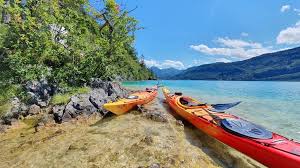Tarnplanen, or camouflage tarps, are more than just simple sheets used to cover objects—they are essential tools for anyone involved in outdoor activities, survival scenarios, military missions, or tactical sports. These tarps serve the dual purpose of protection and concealment. In this guide, we will explore every aspect of tarnplanen including their materials, use cases, patterns, sizes, and how to select the right tarp for your needs. Whether you’re a camper, hunter, prepper, or airsoft enthusiast, understanding the full potential of a tarnplane can be a game-changer for your outdoor setup.
What Are Tarnplanen?
Tarnplanen are tarpaulins designed with camouflage patterns that help them blend into specific environments. Unlike ordinary tarps that are often single-colored, tarnplanen feature various camouflage prints such as woodland, desert, snow, or urban designs. These tarps are made from durable materials such as polyethylene, vinyl, canvas, or polyester and are designed to resist weather conditions, UV rays, and physical damage. The primary goal of a tarnplane is not only to offer protection from the elements but also to keep your presence or equipment hidden in natural or urban surroundings.
Common Uses of Tarnplanen
Tarnplanen have found applications across a wide range of industries and hobbies. In the military, they are used to camouflage equipment, shelters, and vehicles. Hunters rely on them to build concealed blinds, while wildlife photographers use them to get closer to animals without being detected. Survivalists and bushcraft practitioners use tarnplanen as makeshift shelters or gear covers in emergency situations. Campers and hikers find them useful for ground covers, rain protection, or privacy barriers. Even event organizers or homeowners sometimes use tarnplanen for decorative outdoor purposes where visual blending with nature is desired.
Benefits of Using Tarnplanen
There are several advantages to using tarnplanen, which go beyond simple concealment. One of the main benefits is their protective nature. Tarnplanen can shield people and equipment from rain, wind, sun, and even snow. They are durable and can be reused multiple times if maintained properly. They are also lightweight and easy to fold, making them highly portable. Moreover, they help in establishing quick and temporary shelters in survival conditions. Some tarnplanen come with fire-resistant and mildew-resistant coatings, making them suitable for extreme conditions. These features make tarnplanen a vital part of any serious outdoor kit.
Materials and Technical Characteristics of Tarnplanen
Tarnplanen come in different materials, each offering specific strengths. Polyethylene (PE) is the most common and affordable, often used for temporary setups. Canvas and polyester offer more durability and breathability, which are great for long-term use. Vinyl-coated tarps provide excellent waterproofing and resistance to harsh elements, suitable for military or industrial use.
Let’s look at a comparison:
| Material | Key Features | Ideal Use |
|---|---|---|
| Polyethylene | Lightweight, water-resistant, low-cost | General outdoor, short-term use |
| Canvas | Breathable, strong, classic appearance | Bushcraft, survival shelters |
| Vinyl | Waterproof, UV-resistant, heavy-duty | Industrial, tactical operations |
| Polyester | Flexible, durable, mildew-resistant | Camping, weather exposure |
These materials also vary in thickness, typically measured in “mil” (thousandths of an inch) or in ounces per square yard. Heavier tarps generally last longer and offer better protection.
Sizes and Dimensions for Every Use Case
Tarnplanen are available in multiple sizes to suit different purposes. For solo camping or gear coverage, a 1.5 x 2 meter tarp may be enough. Medium-sized tarps like 2 x 3 meters or 3 x 4 meters are ideal for two-person shelters. Large tarps such as 5 x 7 meters or even 6 x 10 meters can cover vehicles or serve as a group shelter.
Here’s a useful reference table:
| Size (Meters) | Recommended Use |
|---|---|
| 1.5 x 2 | Gear cover, seat mat, solo backpacking |
| 2 x 3 | Small tent roof, food area shelter |
| 3 x 4 | Two-person tent, extended shade |
| 5 x 7 | Group shelter, vehicle camouflage |
| 6 x 10 | Basecamp setup, boat or truck coverage |
Camouflage Patterns and Where to Use Them
The effectiveness of a tarnplane depends largely on its camouflage pattern and how well it matches the environment. Woodland camo works best in forests, while desert camo is suited for sandy and arid regions. Snow camo blends well in winter terrains, and urban camo is perfect for city environments or industrial zones.
| Pattern | Best Environment |
|---|---|
| Woodland | Forests, green zones |
| Desert Camo | Sandy, dry landscapes |
| Snow Camo | Snowy and icy areas |
| Urban Camo | Concrete, industrial spaces |
| Flecktarn (German) | Mixed woodland and bush areas |
Choose the right pattern based on your typical activity location for optimal concealment.
How to Choose the Right Tarnplane
When buying a tarnplane, you should consider several factors to make the right choice. First, think about how you’ll use it. Will it be for regular use, or just occasional camping trips? If you’re planning frequent outdoor adventures or survival scenarios, investing in a high-quality vinyl or canvas tarp may be worth it. Also, consider the weight and portability. A lightweight PE tarp is easy to carry but may not withstand harsh weather.
Next, review the finishing features like reinforced corners, rust-proof grommets, and double-stitched hems. These small details significantly affect the lifespan of the tarnplane. Lastly, evaluate your environment. For cold and wet areas, water-resistant and mildew-proof materials are best. For sunny places, look for UV protection.
Real-Life Applications and Setup Tips
Using a tarnplane effectively requires knowing a few practical techniques. To build a quick shelter, tie ropes through the eyelets and anchor the corners with pegs or rocks. You can create a lean-to shelter, an A-frame tent, or a full cover tarp tent depending on your needs. For ground protection, place the tarp under your sleeping bag or tent to avoid moisture. To increase concealment, always align the camo pattern with the surrounding colors and shadows. In extreme weather, double layering your tarnplane can offer added insulation.
Maintenance and Storage Guidelines
To prolong the life of your tarnplane, always clean it after use. Remove mud, sap, or bird droppings using mild soap and water. Avoid abrasive scrubbers that may damage the camo pattern. Let the tarp dry completely before folding to prevent mildew. Store it in a dry, cool place, away from direct sunlight, as UV rays can degrade the material over time. Proper folding, especially at the same crease lines, reduces stress points and prolongs usability.
Environmental Impact and Sustainable Use
While tarnplanen made of synthetic materials can last long, they are not always eco-friendly. However, many manufacturers are now offering recyclable or PVC-free options. If you’re eco-conscious, opt for canvas or biodegradable PE variants. Also, reusing tarps for various purposes and avoiding single-use covers contributes to sustainability. Proper disposal and repurposing of old tarps—for example, turning them into bags or tool covers—can also reduce environmental waste.
Pricing and Buying Recommendations
Prices for tarnplanen vary based on material, size, and features. Basic PE tarps may cost between $10 and $30, while high-end vinyl or canvas tarps can range from $50 to over $100.
Here is a sample pricing table:
| Size | Material | Estimated Price (USD) |
|---|---|---|
| 2 x 3 meters | PE | $10 – $20 |
| 3 x 4 meters | Canvas | $25 – $50 |
| 5 x 7 meters | Vinyl | $50 – $90 |
| 6 x 10 meters | PVC | $70 – $130 |
Popular and trusted suppliers include:
- In Germany: Kotte & Zeller, BW-Online-Shop, ASMC
- In the USA: Tarp Supply Inc., TarpsPlus, MyTarp.com
Always compare features such as UV-resistance, grommet spacing, and thickness before purchasing.
Conclusion
Tarnplanen are indispensable tools for outdoor enthusiasts, survivalists, hunters, and tactical teams. Their unique combination of camouflage, durability, and weather protection makes them suitable for countless scenarios. With the right material, size, and pattern, you can greatly enhance your outdoor experience while staying protected and hidden. From building shelters to protecting equipment or simply adding camouflage to a camp, tarnplanen prove to be an essential asset in every adventurer’s gear.
If you’re planning your next wilderness trip or tactical setup, don’t overlook the power of a good tarnplane—it might just be the gear that keeps you safe, dry, and undetected.
Other Articles
How to Apply XEMIWIKHIZ5654: A Complete Step-by-Step Guide for Beginners and Experts
Colorado Anglers Z797 Fly Tying Kit (B002QFWBDQ): A Complete & Honest Review
Teasemoonga: The Transformative Blend of Ritual and AI Companionship
Understanding 1-888-541-8306: An In-Depth Guide to Unwanted or Suspicious Calls








